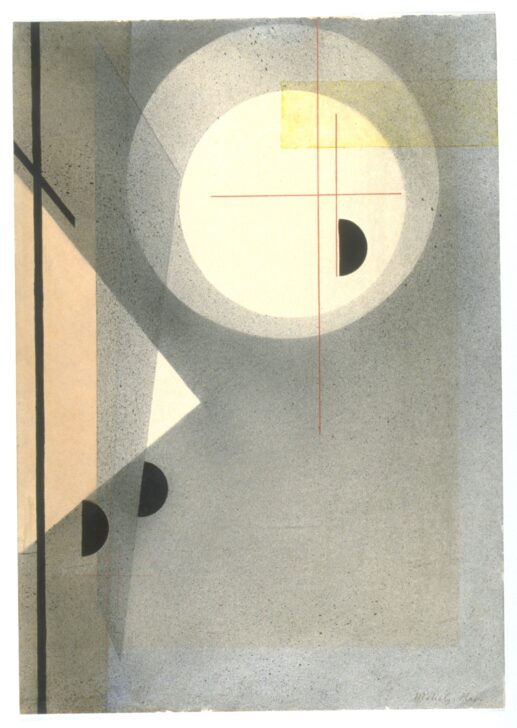Abstrakte Komposition
László Moholy-Nagy

Description
March 28, 2009
The reality of our century is technology…To be a user of
machines is to be of the spirit of this century. It has replaced
the transcendental spiritualism of past eras.
—László Moholy-Nagy, 1922
As an artist and a teacher, Moholy believed that art must accurately reflect the conditions of contemporary life. Faced with the realities of industrial society, Moholy saw traditional, mimetic painting and sculpture as obsolete. Abstraction, by contrast, seemed to provide an appropriately neutral and—importantly—distinctly modern language with which to explore what he viewed as art’s “primordial, basic elements, the ABC of expression itself.”
The identification of these basic elements was central to Moholy’s longstanding desire to harness the transformative powers of art as a means for social and political reform. Freed from the “inevitable connotations” of traditional representation, Moholy argued, abstract art could serve not only to register contemporary problems in universal terms, but also to project a desirable alternative order by “creating new spatial relationships, new inventions of forms, new visual laws—basic and simple—as the visual counterpart to a more purposeful, cooperative human society.”
László Moholy-Nagy
United States, 1895–1946
Abstract Composition (Abstrakte Komposition)
circa 1925
Watercolor, India ink, and collage on off-white wove paper
Museum purchase, 1953/2.9
Subject Matter:
A restrained formal abstract composition, the subject of the piece is the relationship between the shapes and colors. Moholy-Nagy theorized that in the visual realm, space, time, mass, and light can become like one perceptible substance. In this piece we can also see the artist's interest in the spare forms and clean lines of industrial design, an interest of the Bauhaus school where he taught in the twenties.
Physical Description:
A spare and restrained abstract composition is built up out of layers of mostly translucent basic geometric forms. The grey tones of the background are created with large rectangle shapes. In the upper part of the piece is a light colored circle, with a brighter circle inside it. Both are crossed by an axis of bright, thin orange lines. On the left, the point of a triangle protrudes from the edge. It is covered by a faint gray trapezoidal shape. Three small black semi-circles are also visible: one along the lines inside the circles; the other two along the trapezoidal shape and just beneath the triangle.
Usage Rights:
If you are interested in using an image for a publication, please visit https://umma.umich.edu/request-image/ for more information and to fill out the online Image Rights and Reproductions Request Form.